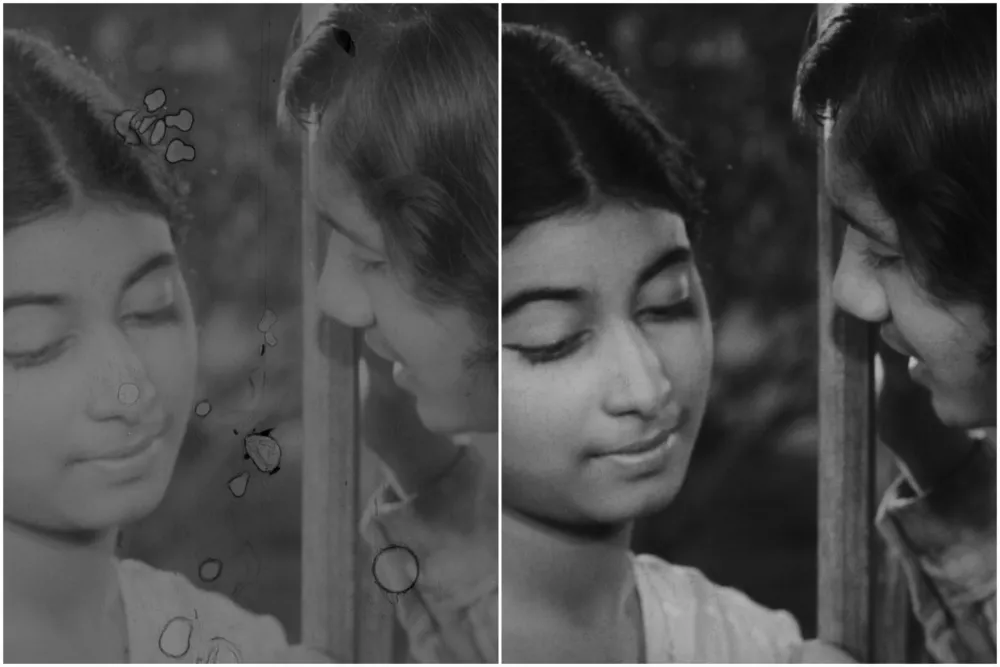Watching Sumitra Peries’ restored ‘Gehenu Lamai’ (The Girls) at its Cannes Classics premiere felt like witnessing a beautiful feat of magic. Almost half a century, after its original release, this Sri Lankan masterpiece emerged from near-extinction with glistening clarity and power. In the theater, the film’s stars sat, decades older, overcome with emotion and pride as they watched their younger selves navigate a story that remains so enduring.
What strikes you immediately about ‘Gehenu Lamai’ is how utterly contemporary it is. Peries captures girlhood in all its confusion, suffering, and heartache. The friendships these girls share are emotionally profound and complex. The camera work is truthful and poetic, playing in the dappled sunlight of youth. The mirror motif that runs throughout the film becomes a meditation on self-perception and social reflection, handled with a visual sophistication that rivals any contemporary auteur.
‘Gehenu Lamai’ follows the story of Kusum, a village girl whose love for her wealthy cousin is thwarted by rigid social hierarchies. Wasanthi Chathurani, cast at just 16, delivers a performance of remarkable naturalism and maturity. Her portrayal of a young woman caught between desire and duty is immediate and raw.
As someone who has researched the politics of crying in educational settings, I was particularly struck by how Peries presents tears not as weakness but as a form of communication that may even be liberatory. In my own work on “collective resilience,” I’ve explored how tears can function as both individual expression and communal bond, a concept that the group of school girls in ‘Gehenu Lamai’ seem to embody beautifully.
The film’s treatment of crying challenges what I’ve termed the “stoic resilience” discourse that pervades institutions. Where schools often interpret tears as failure of emotional regulation, Peries understands them as a language of truth. When Kusum finally breaks down against the tree in the film’s devastating conclusion, her tears become both surrender and resistance. They are the only honest response to her impossible situation. Earlier, when she comforts her crying sister in bed after learning of her pregnancy, we see tears as connection, as the basis for solidarity between women trapped by the same social constraints.
This resonates deeply with my research on how tears can be resilient. I am therefore particularly drawn to the moments in the film where emotional expression becomes a form of agency rather than surrender. Watching this film with its original cast, all of whom were moved to tears by different forms of recognition and loss, felt like witnessing the very “collective resilience” I’ve theorised.
The restoration by Film Heritage Foundation is nothing short of miraculous. Working with damaged 35mm elements that had suffered tears, warpage, and deterioration, they’ve returned the film to its original luminous beauty. The black and white cinematography now reveals every subtle gradation Peries intended, every carefully composed frame restored.
But the most moving aspect of this screening was the presence of the original cast. Seeing Wasanthi Chathurani and Ajith Jinadasa, now in their 60s, watch their teenage selves was profound. When the credits rolled, both were crying, as was much of the audience. The standing ovation felt less like applause and more like a relieved celebration of something precious being so carefully retrieved from time.
Jinadasa later reflected on how audiences still approach him with anger about abandoning Kusum, a testament to the film’s emotional grip across generations. Their tears in that Cannes theater weren’t just nostalgia; they were recognition of a work that deserves to live on, not as artifact but as living cinema that continues to speak to anyone who has ever felt caught between worlds.
‘Gehenu Lamai’ emerges from its restoration not as a historical curiosity but as a vital work of art. Peries created something rare, a film that honors both the specificity of its cultural moment and the universality of human longing. This restoration ensures that future audiences can discover what we witnessed at Cannes: a masterpiece that understands tears not as endings but as beginnings, not as defeat but as the most honest language we have.

